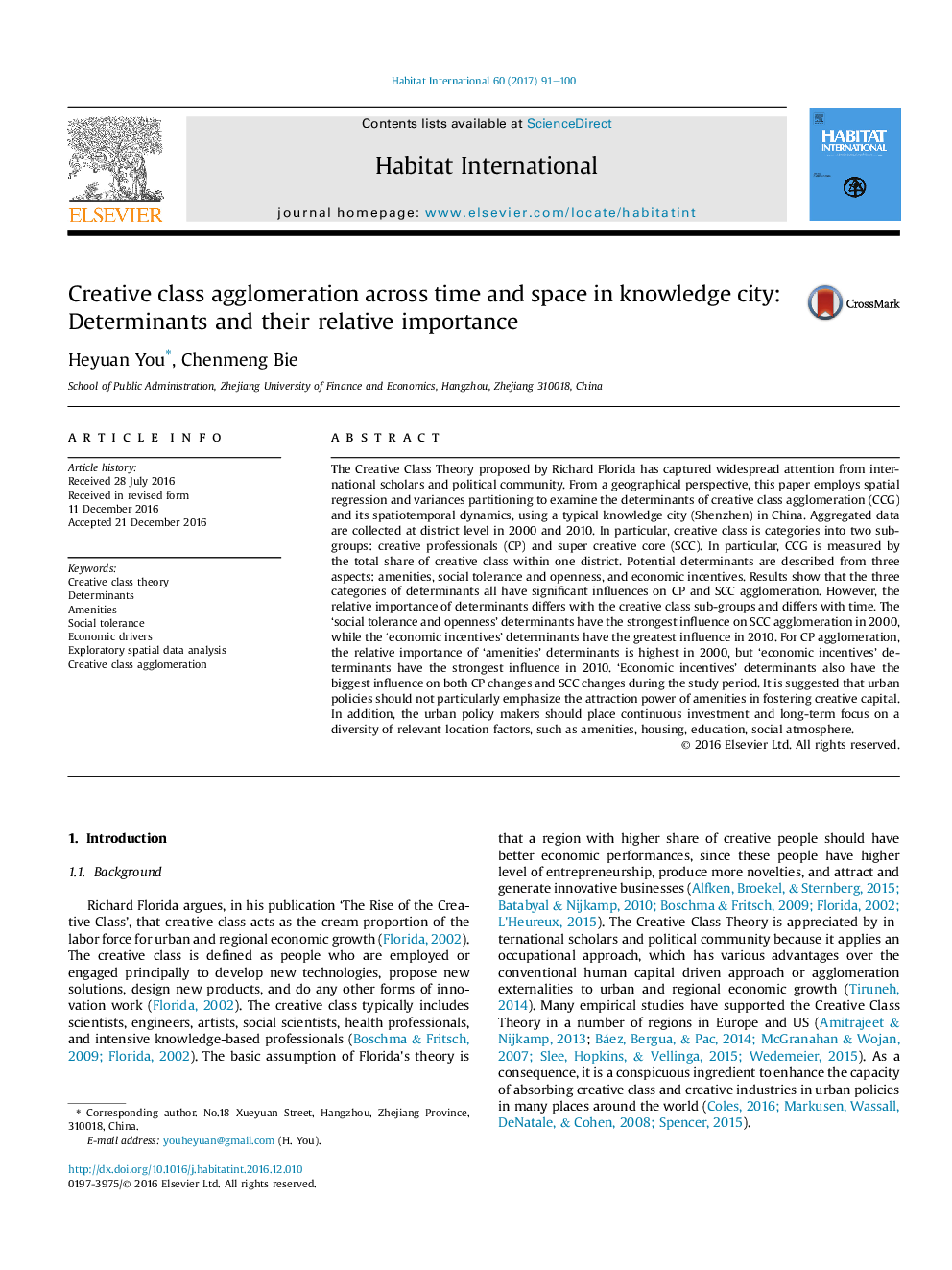| کد مقاله | کد نشریه | سال انتشار | مقاله انگلیسی | نسخه تمام متن |
|---|---|---|---|---|
| 5114717 | 1484484 | 2017 | 10 صفحه PDF | دانلود رایگان |
عنوان انگلیسی مقاله ISI
Creative class agglomeration across time and space in knowledge city: Determinants and their relative importance
ترجمه فارسی عنوان
تجمع کلاس های خلاقانه در زمان و مکان در شهر دانش: عوامل تعیین کننده و اهمیت نسبی آنها
دانلود مقاله + سفارش ترجمه
دانلود مقاله ISI انگلیسی
رایگان برای ایرانیان
کلمات کلیدی
نظریه کلاس خلاق، عوامل تعیین کننده، امکانات تحمل اجتماعی، رانندگان اقتصادی، تجزیه و تحلیل داده های فضایی اکتشافی، تجمع کلاس خلاق،
موضوعات مرتبط
علوم انسانی و اجتماعی
علوم اجتماعی
توسعه
چکیده انگلیسی
The Creative Class Theory proposed by Richard Florida has captured widespread attention from international scholars and political community. From a geographical perspective, this paper employs spatial regression and variances partitioning to examine the determinants of creative class agglomeration (CCG) and its spatiotemporal dynamics, using a typical knowledge city (Shenzhen) in China. Aggregated data are collected at district level in 2000 and 2010. In particular, creative class is categories into two sub-groups: creative professionals (CP) and super creative core (SCC). In particular, CCG is measured by the total share of creative class within one district. Potential determinants are described from three aspects: amenities, social tolerance and openness, and economic incentives. Results show that the three categories of determinants all have significant influences on CP and SCC agglomeration. However, the relative importance of determinants differs with the creative class sub-groups and differs with time. The 'social tolerance and openness' determinants have the strongest influence on SCC agglomeration in 2000, while the 'economic incentives' determinants have the greatest influence in 2010. For CP agglomeration, the relative importance of 'amenities' determinants is highest in 2000, but 'economic incentives' determinants have the strongest influence in 2010. 'Economic incentives' determinants also have the biggest influence on both CP changes and SCC changes during the study period. It is suggested that urban policies should not particularly emphasize the attraction power of amenities in fostering creative capital. In addition, the urban policy makers should place continuous investment and long-term focus on a diversity of relevant location factors, such as amenities, housing, education, social atmosphere.
ناشر
Database: Elsevier - ScienceDirect (ساینس دایرکت)
Journal: Habitat International - Volume 60, February 2017, Pages 91-100
Journal: Habitat International - Volume 60, February 2017, Pages 91-100
نویسندگان
Heyuan You, Chenmeng Bie,
